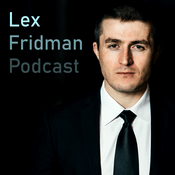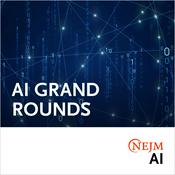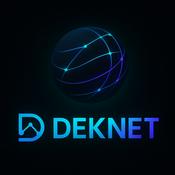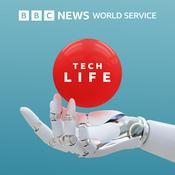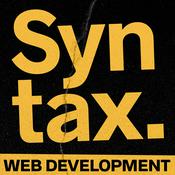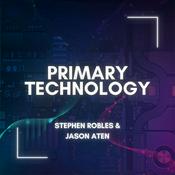261 episodios

Sovereign AI Strategies Driving Middle East Data Center Growth
17/12/2025 | 16 min
David Liggitt, CEO of datacenterHawk, recently spoke with Tahir Gok, MENA Lead and Senior Analyst, about the dynamic growth of the Middle East’s data center industry. Their discussion highlighted the region's evolution from a telco-driven market to a global hub for AI and hyperscale development, examining key drivers, market dynamics, and future trends across the UAE, Saudi Arabia, and other emerging markets.The Middle East data center market has transformed significantly over the last five years. Initially dominated by telco-owned infrastructure, the entry of hyperscalers like AWS and Microsoft around 2020 marked a turning point. This shift mirrors global trends as the region moves toward a hyperscale-focused ecosystem, positioning itself for rapid growth.The conversation highlighted AI as the leading catalyst for growth. The UAE and Saudi Arabia are spearheading this transformation with ambitious sovereign AI strategies, fueling unprecedented investment in digital infrastructure. For instance, Microsoft is shipping thousands of Nvidia chips to the UAE, while G42 is building a five-gigawatt compute campus. In total, $7.9 billion has been committed to regional AI-driven expansion. Challenges such as power availability, export licensing, and GPU delivery timelines remain key constraints, but the momentum is undeniable.Although AI leads the charge, strategies vary by location. The UAE and Saudi Arabia are prioritizing native AI capacity, sometimes bypassing traditional hyperscale builds. Tier 2 markets, such as Qatar, Oman, and Turkey, are growing more conservatively, driven by connectivity and retail cloud demand. Qatar, for example, has a vacancy rate of just 1.17%, thanks to government-led initiatives, while Turkey attracts semiconductor investments through programs like "HIT 30." Oman leverages new subsea cable landings to boost its strategic importance. For operators, understanding these localized dynamics is essential, as regulatory factors often favor ground leases and build-to-suit projects over freehold land transactions.The region's expansion plans hinge on securing sustainable and scalable power. Both the UAE and Saudi Arabia are exploring solar and natural gas plants to meet the significant energy demands of AI deployments. Tahir Gok emphasized that reducing power costs by up to 50% will be crucial to making large-scale AI projects economically viable. Efficient power infrastructure will be the cornerstone of the region’s growth over the next three to five years.This discussion underscores how the Middle East has transitioned from an emerging market to a key player in global digital infrastructure. With bold AI goals and massive capital investments, the region is scaling data center capacity at an unprecedented pace. However, success will depend on navigating unique regional strategies, regulatory environments, and power constraints. The trends explored in this conversation will undoubtedly shape the future of data centers, both in the Middle East and worldwide.Rapid Transformation: From Telco to HyperscaleAI Driving ExpansionRegional Market DynamicsFocus on Power and SustainabilityA Global Digital Hub

The Green Mountain Playbook for European Market Growth
15/12/2025 | 35 min
The European data center market is rapidly evolving, driven by rising demand for capacity and stricter sustainability requirements. On the HawkTalk podcast, David Sandars, Regional Director EMEA at datacenterhawk, spoke with Mette Berger Gulbrandsen, Chief Marketing & Communications Officer at Green Mountain, about the company’s journey from Norwegian mountain vaults to a pan-European operator while staying committed to sustainability.Green Mountain’s unique story began in Rennesøy, Norway, where a former NATO ammunition bunker was transformed into a secure and energy-efficient data center. By using the adjacent fjord’s cold waters for cooling and renewable hydropower, the facility became a model of sustainable design. This ingenuity demonstrated that leveraging natural resources isn’t just environmentally beneficial but also operationally efficient. Following the success at Rennesøy, Green Mountain expanded to Rjukan, another remote Norwegian location ideal for secure, sustainable operations. However, the company recognized the need for proximity to economic hubs to meet client requirements for low-latency workloads. This shift led to the opening of a facility near Oslo and marked the start of a strategic “hub and spoke” model.Green Mountain’s growth accelerated after its acquisition by international owners in 2021, boosting resources for expansion. The company struck a major deal with TikTok in 2023 and began international projects, including a London acquisition and a development in Frankfurt. This balanced approach allows Green Mountain to offer clients both cost-effective, sustainable remote storage and urban connectivity.Green Mountain’s upcoming Frankfurt facility showcases how data centers can tackle power and environmental challenges. Partnering with local energy provider KMW, the site will utilize renewable wind and solar power, while replicating Green Mountain’s water-cooling method using river water.The facility will also employ gas turbines for backup power, reducing emissions compared to diesel generators, and feed excess heat into the district heating system, warming 20,000 homes. This innovative partnership not only addresses power constraints but also integrates into the local energy ecosystem to add community value.Green Mountain actively addresses local concerns by showcasing the economic benefits of its projects. Independent studies revealed the construction of its 90 MW site generated $600 million in value and supported 4,700 full-time jobs.In addition to data-driven evidence, the company engages communities through open days, educational programs, and support for local initiatives. This combination of transparency and outreach has helped Green Mountain build trust and secure long-term community support.Green Mountain’s journey from a single mountain facility to a leading European data center operator underscores the maturity of the Nordic market. The company has proven that sustainability is not just a value-add but a necessity for scaling operations. Its innovative use of geographic resources, partnerships with energy providers, and commitment to community engagement set a high standard for the industry.As demand for capacity grows, Green Mountain’s success highlights the importance of creative infrastructure reuse and deep integration with local energy systems, paving the way for a more sustainable future in data center operations.Repurposing History for Modern Data NeedsExpanding with Strategy: Remote vs. Urban HubsFrankfurt: A Blueprint for Energy CollaborationDemonstrating Economic and Social ImpactA Roadmap for Sustainable Growth

Power, Policy, and Potential: The Future of Argentina's Data Centers
02/12/2025 | 33 min
In a recent discussion, datacenterHawk's Regional Director for the Americas, Steve Sasse, sat down with Pablo Amarelle, General Manager of Zonasur, to explore the burgeoning data center landscape in Argentina. The conversation provided a detailed analysis of why Argentina, despite being the third-largest economy in Latin America, has lagged in digital infrastructure and how recent shifts are positioning it for significant growth. Amarelle offered an insider's perspective on the unique advantages of the Bahía Blanca region and the strategic role of Zonasur's free trade zone in attracting large-scale investment.Historically, Argentina's digital infrastructure development has been hindered by economic instability, high inflation, and capital controls. Amarelle explained that these factors created uncertainty, which is detrimental to the long-term, capital-intensive nature of data center projects. However, a new political and economic landscape is changing perceptions. With capital controls being lifted and growing geopolitical support, investors are now viewing Argentina as a prime opportunity for growth, ready to address the existing lack of modern infrastructure.A significant portion of the discussion focused on the strategic benefits of developing data centers in Bahía Blanca. Amarelle highlighted two key differentiators: power availability and the free trade zone (FTZ) tax regime. Bahía Blanca is an "exporter node" of electricity, generating over two gigawatts and poised for more with upcoming wind farm projects. This local abundance of power mitigates transmission bottlenecks seen elsewhere. Furthermore, operating within the Zonasur FTZ exempts data centers from a 27% value-added tax on energy and eliminates import duties on equipment, providing immense cost savings and certainty for investors.Addressing another critical infrastructure pillar, Amarelle confirmed that Bahía Blanca is a major connectivity hub. It serves as a node for multiple carriers, with redundant fiber routes connecting to Buenos Aires and the subsea cable landing station in Las Toninas. The latency to Buenos Aires is an impressive 5.5 to 7 milliseconds, making it a viable location for latency-sensitive applications. This combination of robust power, a favorable tax structure, and strong connectivity positions the region as an ideal alternative to congested primary markets, allowing developers to scale efficiently.The dialogue between Sasse and Amarelle painted a compelling picture of a market at a turning point. For data center operators and investors, Argentina represents a market with untapped potential, a highly skilled workforce, and a growing knowledge economy. The strategic groundwork laid by organizations like Zonasur in Bahía Blanca provides a clear, de-risked path for entry, offering the power, connectivity, and financial incentives necessary to support the next wave of digital infrastructure development in Latin America.Overcoming Past InstabilityThe Power and Tax Advantage of Bahía BlancaConnectivity and Strategic Location

Aligned on Powering Future Data Centers
01/12/2025 | 19 min
The data center industry's approach to power is undergoing a major transformation. What was once a straightforward connection to the grid has become a complex, strategic challenge. At the Advancing Data Center Construction conference, Mike Netzer of datacenterhawk spoke with Tim Stephenson, Director of Power Generation for Aligned Data Centers, to discuss the shift toward onsite power generation and its implications for the sector.One of the key shifts highlighted was the move from traditional grid reliance to "behind-the-meter" power solutions. This approach creates an independent, self-sustained power source solely for a data center campus, disconnected from the public grid. With utility infrastructure struggling to keep up with the industry’s 15-17% annual growth in power demand, onsite power generation offers operators greater control, reliability, and the ability to build facilities in areas where grid power is insufficient or unavailable. As Stephenson explained, “We’re looking at being completely off the grid, developing power designed exclusively for our data centers.”The transition to onsite power requires more than simply replacing grid power with a single alternative. Aligned employs a hybrid approach, integrating technologies like natural gas combustion turbines, reciprocating engines, and fuel cells to handle diverse power needs. Modern computing loads are volatile, spiking from 30% to 100% usage within milliseconds, so Aligned also incorporates battery energy storage systems (BESS), synchronous condensers, and supercapacitors for added stability. This layered strategy ensures reliability and prevents power disruptions.Onsite power generation brings clear advantages, including guaranteed availability, independence from utility curtailments, and scalable capacity that can grow from 100 megawatts to a gigawatt. However, these benefits come with challenges. Costs are significant, with natural gas power costing 7 to 8 cents per kilowatt-hour—higher than grid power, which benefits from economies of scale. Additionally, developing onsite power requires navigating complex permitting processes for air and water, securing fuel supply infrastructure, and addressing potential community concerns about hosting a private power plant.Data centers demand near-perfect uptime, and onsite power plants must deliver. Stephenson revealed that Aligned designs its private power plants for 99.9% reliability, far surpassing traditional commercial plants. This is achieved through modular designs and redundancy. Instead of relying on large, single units, Aligned’s plants use smaller modules like individual turbines or fuel cells. This modularity allows maintenance on one unit without disrupting overall power supply, ensuring continuous operation.As grid constraints persist, the shift to onsite power will become more widespread. Site selection is already evolving, prioritizing access to natural gas pipelines over proximity to grid interconnects. While natural gas serves as a key bridge technology, the long-term vision includes cleaner, advanced energy sources. Small Modular Reactors (SMRs), though promising, remain several years away from commercial viability, with Stephenson estimating a 7-8 year timeline.The future of data center power lies in a sophisticated mix of technologies, strategic site selection, and innovative energy solutions. By embracing onsite power generation, operators can gain greater control over their energy needs while building infrastructure for the next era of growth.Moving Toward "Behind-the-Meter" PowerA Multi-Layered Power StrategyBenefits and ChallengesBuilding for Unmatched ReliabilityThe Future of Data Center Power

Powering the Future: How Nuclear Innovation Will Fuel the Data Center
20/11/2025 | 18 min
In a recent datacenterHawk podcast, VP of Sales Mike Netzer spoke with Thomas Jam, Founder and CEO of Copenhagen Atomics, about nuclear energy's role in powering the growing data center industry. The discussion centered on next-generation thorium molten salt reactors, exploring their potential to deliver scalable, cost-effective, and reliable energy. Jam delved into the innovations driving his company, the regulatory challenges, and his long-term vision for transforming global energy.Copenhagen Atomics' mission is clear: disrupt the energy market by creating reactors that are at least ten times better than existing solutions. For Jam, cost is the most critical factor, with a goal of making his reactors five times cheaper than conventional nuclear plants. To achieve this, the company focuses on overcoming long-standing challenges in nuclear power, including lengthy construction timelines, cost overruns, waste management, and safety concerns. Their approach integrates fuel reuse and streamlined manufacturing to drive down the overall cost of energy production.While ambitious, the path to commercialization is complex. Jam discussed the extensive regulatory process, from site approvals to safety and operational permits, which has pushed their production goal from 2028 to 2030. A demonstration reactor planned for 2027 in Switzerland marks a key milestone in their journey. Jam also highlighted a U.S. initiative aiming to deploy new reactors by 2026, reflecting growing momentum in the nuclear sector. In the long term, the company envisions mass production, with a goal of manufacturing one 100 MW thermal reactor per day, adding 10 gigawatts of electrical capacity annually—a transformative scale for energy-intensive industries.The conversation turned to nuclear power's application in data centers. Jam explained that the financial viability of a dedicated, behind-the-meter nuclear power plant depends on scale. For smaller 100 MW data centers, connecting to the grid is more economical. However, as campuses scale toward one gigawatt, building private power infrastructure becomes more attractive to avoid high grid service costs, which can double electricity prices. Jam emphasized the complexity of this approach, which requires multiple reactor units, backup systems, and potentially battery storage to meet the high reliability demands of data centers.Jam placed data center energy needs within the broader context of global consumption. Heavy industries like steel, concrete, and aluminum manufacturing remain far more energy-intensive. For example, one oil refinery can use five gigawatts of heat, dwarfing the energy demands of most data center campuses. Jam projects a tenfold increase in global energy usage over the next century and argues that only nuclear energy can scale to meet this growth. He believes nuclear will become a cornerstone of the future energy mix, as other sources face scaling limitations.The discussion underscored a key reality: while nuclear power is poised to play a vital role in data centers, its integration will be a deliberate process. On-site nuclear reactors for every data center may not be practical, given the economic and regulatory complexities. Instead, the most impactful applications will emerge at the gigawatt scale, reshaping the grid and powering the largest infrastructure campuses. Copenhagen Atomics’ focus on creating a better, scalable energy solution highlights a vision extending far beyond today’s needs, addressing long-term global energy challenges. For data center operators and investors, the takeaway is clear—nuclear power holds transformative potential, but its full impact will come through strategic, large-scale deployment.Aiming for Radical ImprovementChallenges on the Road to DeploymentWhen On-Site Nuclear Makes Sense for Data CentersThe Bigger Picture of Global Energy DemandA Strategic Path Forward
Más podcasts de Tecnología
Podcasts a la moda de Tecnología
Acerca de datacenterHawk
Escucha datacenterHawk, Lex Fridman Podcast y muchos más podcasts de todo el mundo con la aplicación de radio.net

Descarga la app gratuita: radio.net
- Añadir radios y podcasts a favoritos
- Transmisión por Wi-Fi y Bluetooth
- Carplay & Android Auto compatible
- Muchas otras funciones de la app
Descarga la app gratuita: radio.net
- Añadir radios y podcasts a favoritos
- Transmisión por Wi-Fi y Bluetooth
- Carplay & Android Auto compatible
- Muchas otras funciones de la app


datacenterHawk
Descarga la app,
Escucha.
